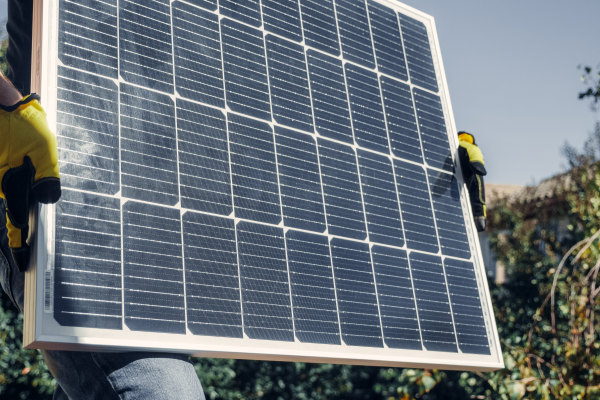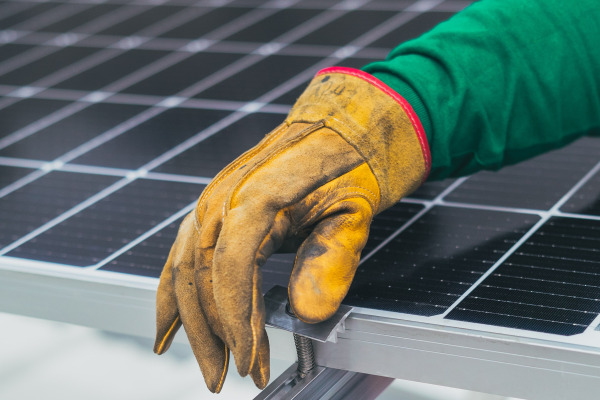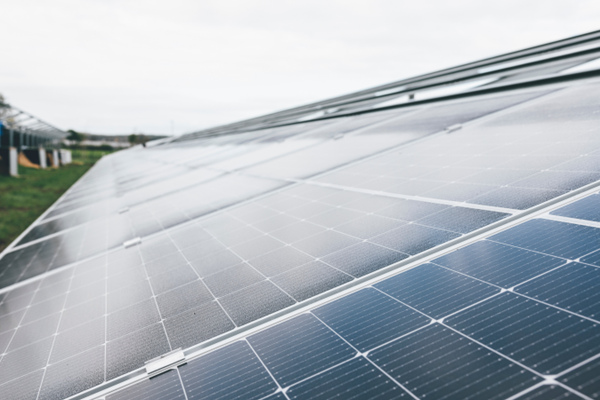How Long Does It Take To Install Solar Panels: 2023 Guide
The adoption rate of solar panel systems in the US has exponentially increased in recent times. For example, the current cost of solar panels has decreased by 70% since 2014 , according to a study by the Solar Energy Industries Association, which has contributed to the technology’s strong growth among homeowners. Likewise, the SEIA predicts that 14% of American homes will have solar panels installed on their homes by the year 2030 – that equates to roughly one out of every seven homes in the country having a rooftop solar panel system.
The industry has experienced massive growth over the past few decades, and solar panels are being installed on rooftops around the world. But how long does it take to install a solar panel system? Before we dive into that answer, there are several considerations to take into account when installing your own solar panels or having an installation company perform the work for you. Below we've outlined a step-by-step guide covering how long it takes to install solar panels, installing solar panels on roof structures, RV solar panel installation times, and more.
How Long Do Solar Panels Take To Install
As with most solar panel system questions, if you’re wondering about how long does it take to get solar panels installed, it ultimately depends on the size of the system, how many panels, the size of your roof or installation location, and whether you’ve hired a company to install the panels (or plan on doing it yourself). A solar panel system will typically take only a few days for the actual installation job to be completed. Three days is the upper limit time length for most jobs being performed by an experienced installation team. However, the time it takes from purchasing a system to having that system installed and up and running varies, and there are more steps involved than one might think. Below, we highlight a few of these overlooked steps involved in the solar process.

System Selection and Site Preparation, Design, and Planning
If you’ve hired a full-service solar contractor, they will take care of virtually all steps involved in the entire process, including examining your installation site, determining your specific energy requirements, and planning out the system. The on-site visit will involve a solar professional visiting your home or business and ensuring that your roof does not need any major repairs (e.g., a replacement), there isn’t an excess of shading, or that the solar panels won’t be obstructed by other buildings (a common occurrence in cities and densely populated areas). After performing this assessment, the solar pro will present you with a system, its design for your specific roof/structure layout, and offer a contract. This entire process can take anywhere from one week up to one month.
Permits and Regulations
Let’s say that you’ve had a solar pro come out to your property, they assessed it, and you signed a contract. Now what? Well, the next step in the process is obtaining the proper permits from your local government or authority. In most regions across the US, the contractor installing your solar panels will need to obtain certain permits for the solar panel installation, which will vary according to the specific laws/regulations of your city, county, or state. For example, some areas will require only an electrical permit while others might require a building permit, or a combination of the two. In addition, some areas have newly-made solar permits for this specific purpose. This time length of the permitting process depends on your local government, but you can expect it to take somewhere between 21 to 77 days. This resource from NREL (the National Renewable Energy Lab) can help you pinpoint how long this process will take for your project.
Permissions
After you’ve gone through all the necessary steps in getting your solar panel system up and running, you still need to obtain permission from the utility company to actually use it to generate electricity for your home or business. The “Permission to Operate,” or PTO, is required for the utility company to approve your solar panel system’s influx of power into its grid. Most time estimates place this process between 21 days, going upwards of 50 days. The NREL resource linked above can help you determine how long this process might take for your utility.
How Long To Install Solar Panels – Total Timeline
As you now know, solar panel installation covers a lot more than just installing the actual solar panel system. There are several steps involved, and this is something that homeowners or business owners should take into account when considering making the purchase of a system and start harnessing the power of the sun. Below is an overview of each step of the process:
●System Selection and Site Preparation, Design, and Planning: 1 to 4 weeks
●On-Site Solar Panel Installation: 1 to 3 days
●Government and Local Authority Approval: 3 to 11 weeks
●Utility Permits: 3 to 7 weeks
●Total Time: 7 to 21 weeks
Solar Panel Installation Times: Roof vs Ground vs RV
If you’re wondering how much installing solar panels on your roof costs in total, it involves more than just money, but also time – 7 to 21 weeks from initial purchase to running your appliances via the sun. And while a building’s roof is the most common place for solar panels to be installed, a lot of homeowners ask; can solar panels be installed on the ground? In certain use cases, a system can be installed on the ground instead of a roof. One of the main reasons homeowners opt for ground-mounted panels is aesthetic-based – they do not want panels on their home’s roof. The hardware installation time for a ground-mounted panel system is usually shorter than a roof system due to a lowered level of complexity in the initial setup. All other aspects of the installation process remain the same (i.e., permit wait times, obtaining permission from the utility, etc.).

Now, what about an RV installation? Since your RV is not a building connected to the power grid, it will not require a building permit or electrical permit from your local authority which will negate a large portion of the typical solar panel installation process. And because most RV systems are not big and don’t require as much planning as a residential system, the hardware installation time is typically under one day, and can even be just a few hours if you hire a solar contractor to do the work.
FAQ
Can solar panels be installed in one day?
Yes. Depending on the size of your solar panel setup, it is possible for an installation to be completed in under one day. Most residential hardware installations take a maximum of three days to be completed. The longest part of the solar panel installation process is waiting to receive the required permits and permissions from your local government/authority and utility to actually use the solar panel system.

Do I need to tell my electricity supplier I have solar panels?
If you want to utilize the system in tandem with on-grid electricity, yes. In the US, you must obtain a permission to operate (PTO) from your utility provider in order to use your solar panel system. Why? Because in order for your system to connect to the grid, the utility must authorize it. This happens after the local government/authority has inspected the system and granted the necessary permits.
How long does it take to install commercial solar panels?
One of the major differences between a residential system and a commercial one is the actual size of the solar panel system – commercial systems are typically much larger than home-use systems. For this reason, the hardware installation time can be exponentially longer, ranging from weeks to even months for a total install. This amount of time does not include the other steps of the process either, such as obtaining permits and the permission to operate (PTO) from the utility.
Can you install solar panels yourself instead of a contractor?
Yes, it is 100% possible to install solar panels yourself. However, there are certain component and electrical-related parts of the process that are better for professionals to handle. The other benefit of using a professional solar contractor is they have years of experience in performing successful installations, and will be much faster and more efficient than a DIY install (in most cases).
Find more related information on Renogy blogs or if you have the need to buy a suitable solar panel system, visit our Renogy store , and you will find everything you want, including high-efficient monocrystalline solar panels , pure sine wave inverters , lithium ion solar batteries , and more.
Related articles:
Important Things You Should Know When Buying A House With Solar Panels
Different Types Of Solar Panels: Which The Right Type For You
Solar Panels Usage: The 9 Most Common Uses Of Solar Power
Everything You Need To Know About The Highest Wattage Solar Panels









